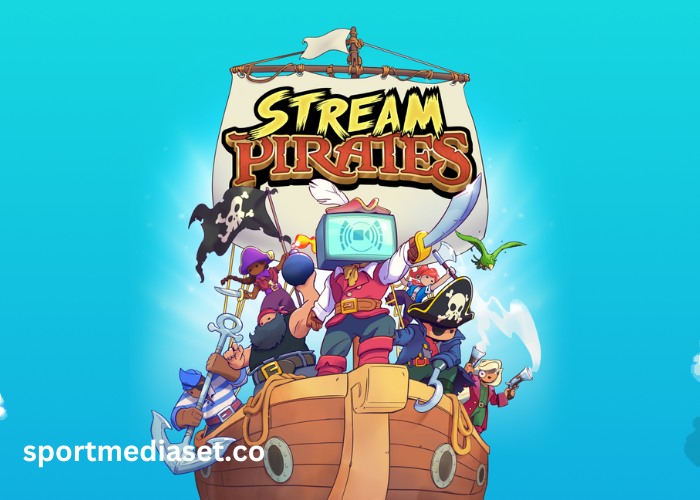In today’s digital age, the internet has transformed the way we consume entertainment. With the rise of streaming platforms, it has become easier than ever to access a vast library of movies, TV shows, and music at the click of a button. However, along with this convenience comes a dark side – stream piracy. In this article, we will explore the rise of stream piracy, its impacts on the entertainment industry, the legal implications surrounding it, the role of technology in facilitating piracy, ways to protect your content, and the future consequences of allowing this issue to persist.
The Rise of Stream Piracy
Stream piracy, also known as illegal streaming or unauthorized streaming, refers to the act of streaming copyrighted content without the permission of the rights holder. This phenomenon has gained significant traction in recent years, fueled by the widespread availability of high-speed internet and the growing demand for free, on-demand entertainment. While the exact scale of stream piracy is difficult to measure, it is estimated to cost the entertainment industry billions of dollars annually.
The allure of stream piracy lies in its accessibility and affordability. With just a few clicks, anyone can gain access to a wide range of movies, TV shows, and music without paying a dime. This poses a significant challenge to legitimate streaming platforms and content creators, who rely on revenue from subscriptions and advertising to sustain their operations. Moreover, stream piracy undermines the value of intellectual property and discourages innovation in the entertainment industry.
Impacts of Stream Piracy on the Entertainment Industry
Stream piracy has far-reaching consequences for the entertainment industry. First and foremost, it deprives content creators and rights holders of their rightful earnings. When content is illegally streamed, the revenue that would have been generated from legitimate channels is lost. This can have a detrimental effect on the ability of artists, musicians, filmmakers, and other creatives to sustain their careers and continue producing high-quality content.
Furthermore, stream piracy distorts market dynamics and affects the viability of legal streaming platforms. When consumers have easy access to free, illegal streams, they are less likely to subscribe to legitimate services. This, in turn, reduces the revenue generated by these platforms, making it challenging for them to acquire and produce new content. As a result, the diversity and quality of entertainment options available to consumers may suffer.
Legal Implications and Efforts to Combat Stream Piracy
Stream piracy is not only ethically wrong but also illegal. The unauthorized streaming of copyrighted content infringes upon the rights of content creators, who have invested time, money, and effort into producing their work. In many countries, stream piracy is a criminal offense and can result in hefty fines and even imprisonment. However, enforcing these laws can be challenging due to the global nature of the internet and the anonymity it provides to perpetrators.
Nevertheless, efforts are being made to combat stream piracy on multiple fronts. Governments, law enforcement agencies, and industry bodies are increasingly working together to identify and prosecute individuals and organizations involved in this illicit activity. In addition, content creators and rights holders are exploring innovative business models, such as exclusive releases and partnerships with legitimate streaming platforms, to incentivize consumers to choose legal options over pirated content.
The Role of Technology in Stream Piracy
Technology plays a dual role in stream piracy – both as an enabler and a potential solution. On one hand, technological advancements have made it easier for individuals to access and distribute copyrighted content without detection. Peer-to-peer networks, streaming websites, and dedicated pirate streaming apps have become commonplace, providing a seamless experience for users seeking pirated content.
On the other hand, technology also offers tools and solutions to combat stream piracy. Digital rights management (DRM) technologies, watermarking, and content recognition algorithms can help identify and track unauthorized streams. Furthermore, advancements in artificial intelligence and machine learning can aid in the detection and removal of pirated content, making it increasingly difficult for stream pirates to operate undetected.
Ways to Protect Your Content from Stream Pirates
If you are a content creator or rights holder, it is crucial to take proactive measures to protect your intellectual property from stream pirates. Here are some strategies to consider:
1. Copyright registration and protection
Ensure that your content is legally protected by registering your copyright. This will provide you with legal recourse in case of infringement and make it easier to enforce your rights.
2. Watermarking and fingerprinting
Implement watermarking and fingerprinting technologies to uniquely identify your content. This can deter stream pirates and help you track and take action against unauthorized streams.
3. Collaboration with streaming platforms
Partner with legitimate streaming platforms to make your content easily accessible to consumers. By providing a convenient and affordable alternative to piracy, you can encourage users to choose legal options.
4. Educate your audience
Raise awareness about the negative consequences of stream piracy and the importance of supporting content creators. Engage with your audience through social media, blogs, and other channels to foster a sense of community and connection.
The Future of Stream Piracy and Its Potential Consequences
The future of stream piracy hangs in the balance, and its consequences could be far-reaching. If left unchecked, stream piracy has the potential to further erode the revenue streams of content creators, leading to a decline in original and diverse content. This, in turn, could have a detrimental effect on cultural expression and artistic innovation.
To prevent such a future, stricter regulations and enforcement against stream piracy are needed. Governments, industry bodies, and technology companies must collaborate to develop comprehensive strategies that address the root causes of piracy, deter potential infringers, and protect the rights of content creators. Only through collective action can we ensure the sustainability and vitality of the entertainment industry.
Case Studies of Stream Piracy Incidents
Unfortunately, stream piracy is not a hypothetical threat – it is a real and ongoing issue. Numerous high-profile incidents have highlighted the extent of the problem and the challenges faced by content creators and rights holders. Let’s examine a couple of case studies that shed light on the impact of stream piracy:
1. The Leak of “Game of Thrones” Episodes
In 2017, several episodes of the hit TV series “Game of Thrones” were leaked online before their official release. This not only resulted in a loss of viewership for the legitimate broadcast but also affected the anticipation and enjoyment of fans who had been eagerly awaiting the new episodes. The leak highlighted the vulnerability of even the most popular and well-protected content to piracy.
2. The Unauthorized Streaming of Major Sporting Events
Major sporting events, such as the FIFA World Cup and the Olympic Games, attract billions of viewers worldwide. However, stream piracy poses a significant threat to the revenue generated by broadcasters and rights holders. Illegitimate streams offer an alternative to official broadcasts, siphoning viewership and undermining the value of broadcasting rights.
Stream Pirates vs. Legitimate Streaming Platforms
It is important to draw a clear distinction between stream pirates and legitimate streaming platforms. While stream pirates operate outside the boundaries of the law, legitimate streaming platforms provide a legal and convenient avenue for content consumption. These platforms invest in acquiring and producing high-quality content, compensate rights holders, and contribute to the growth and sustainability of the entertainment industry.
Choosing legitimate streaming platforms over stream pirates is not just a matter of legality but also ethical responsibility. By supporting legal options, you are ensuring that artists, musicians, filmmakers, and other creatives receive fair compensation for their work, enabling them to continue producing the content you love.
Conclusion
Stream piracy is a growing threat to the entertainment industry, with far-reaching impacts on content creators, legitimate streaming platforms, and consumers. It undermines the value of intellectual property, distorts market dynamics, and hampers the sustainability of the industry.
To protect the rights of content creators and ensure the availability of diverse and high-quality entertainment options, stricter regulations and enforcement against stream piracy are imperative.
By taking collective action, we can secure a future where creativity and innovation thrive, and the entertainment industry continues to captivate and inspire audiences worldwide.




